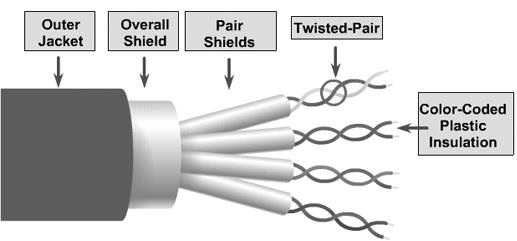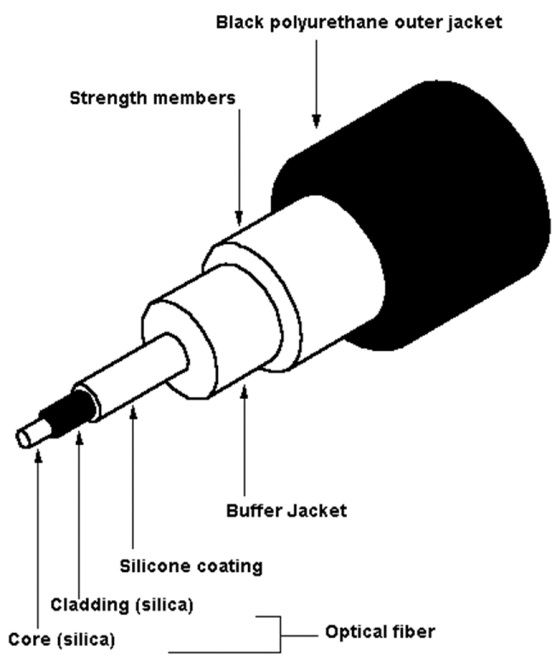
 Data Structure
Data Structure Networking
Networking RDBMS
RDBMS Operating System
Operating System Java
Java MS Excel
MS Excel iOS
iOS HTML
HTML CSS
CSS Android
Android Python
Python C Programming
C Programming C++
C++ C#
C# MongoDB
MongoDB MySQL
MySQL Javascript
Javascript PHP
PHP
- Selected Reading
- UPSC IAS Exams Notes
- Developer's Best Practices
- Questions and Answers
- Effective Resume Writing
- HR Interview Questions
- Computer Glossary
- Who is Who
What are guided and unguided transmission media?
In transmission media is the way the systems are connected to route data signals in a network.
The telecommunication links are classified into two categories −
- Guided media (wired)
- Unguided media (wireless).
Both guided and unguided are used for short distance (LANs, MANs) as well as long distance (WANs) communication.
Let us discuss Guided transmission media.
Guided transmission media
Guided transmission media consists of physical connection between source and destination through a wire or a cable.
There are three basic types of guided media which are as follows −
- Twisted pair cable
- Co-axial cable
- Fiber-optic cable
Twisted Pair Copper
Step 1 − It is the most used media across the world. All the local telephone exchanges are made of twisted pair copper. These telephone lines are reused as last mile DSL access links to access the internet from home.
Step 2 − Twisted pair copper wires are also used in Ethernet LAN cables within homes and offices.
Step 3 − It supports low to High Data Rates which is in the order of Gigabytes.
Step 4 − These wires are effective up to a maximum distance of a few kilometres/miles, because the signal strength is lost significantly beyond the distance.
Step 5 − Generally, they come in two variants as follows −
- UTP (unshielded twisted pair)
- STP (shielded twisted pair)
For every variant, there are multiple sub-variants, based on the thickness of the material (like UTP-3, UTP-5, UTP-7 etc.)
The twisted pair copper is diagrammatically represented as follows −

Copper Co-axial Cables
Step 1 − Co-axial copper cables consist of inner copper conductor and an outer copper shield, which are separated by a di-electric insulating material, helpful in preventing signal losses.
Step 2 −: Copper co-axial cables used in cable TV networks and as trunk lines between telecommunication equipments.
Step 3 − It serves as an internet access line from the home and supports medium to high data rates.
The copper co-axial cable is diagrammatically represented as follows −

Fiber Optic Cables
Step 1 − In fiber optic cable the information is transmitted by propagation of optical signals (light) through fiber optic cables and not through the electrical/electromagnetic signals. Because of this, the fiber optics communication supports longer distances as there is no electrical interference.
Step 2 −: The fiber optic cables are made of very thin strands of glass (silica). It supports high data rates.
Step 3 − It is used for accessing the internet from home through FTTH (Fiber-To-The-Home) lines.
Examples − OC-48, OC-192, FTTC, HFC.
The fiber optic cable is diagrammatically represented as follows −

Now let us discuss Unguided Transmission media.
Unguided transmission media
In Unguided transmission media there is no physical connection between source and destination, instead they use air itself. These connections are not bound to a channel to follow.
Unguided transmission media uses two basic types of primary technologies which are as follows −
Microwaves
Step 1 − Microwaves travel in straight lines and therefore the narrow focus concentrates all the energy into a beam.
Step 2 − In microwaves periodic repeaters are necessary for long distances and for transmitting and receiving antennas are aligned accurately.
Example − Bluetooth technology.
Satellite
Step 1 − Use microwave radio to protect from the atmosphere and act as a microwave relay station.
Step 2 − They are situated in space 22,000 miles above the equator, and it appears stationary from the earth as it rotates with specific speed.
Step 3 − They can amplify and relay microwave signals from one transmitter on the ground to another.
Differences
The major differences between guided and unguided transmission media are as follows −
| Guided media | Unguided media |
|---|---|
| The signal requires a physical path for transmission. |
The signal is broadcasted through air or sometimes water |
| It is called wired communication or bounded transmission media. |
It is called wireless communication or unbounded transmission media. |
| It provides direction to signal for travelling. Twisted pair cable, coaxial cable and fibre optic cable are its types. |
It does not provide any direction. Radio waves, microwave and infrared are its types. |

